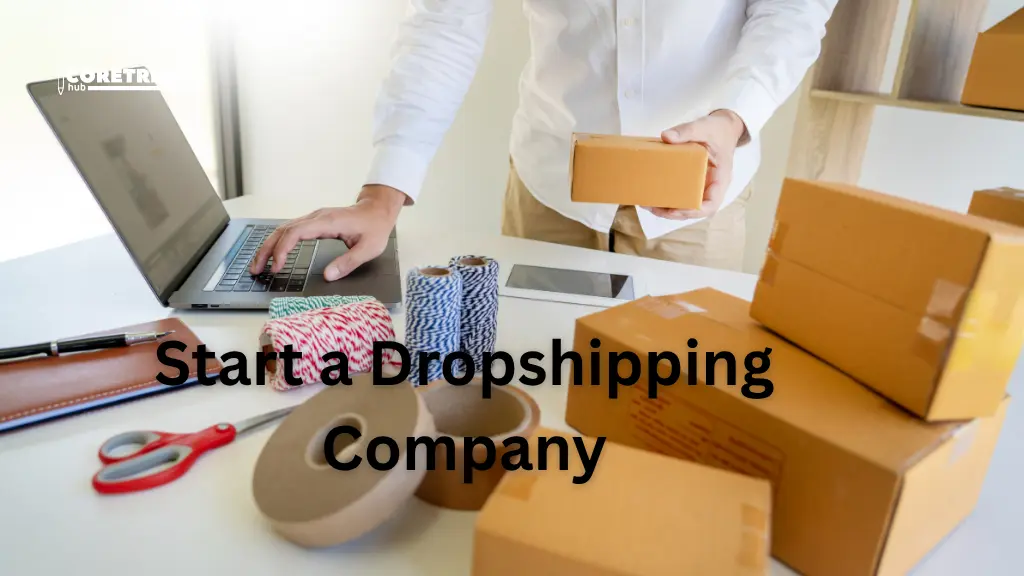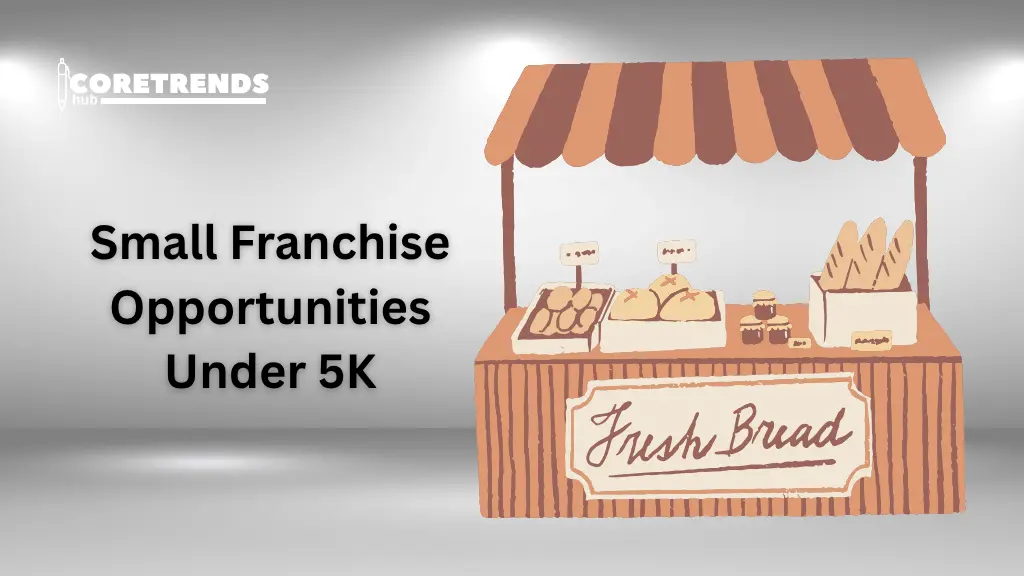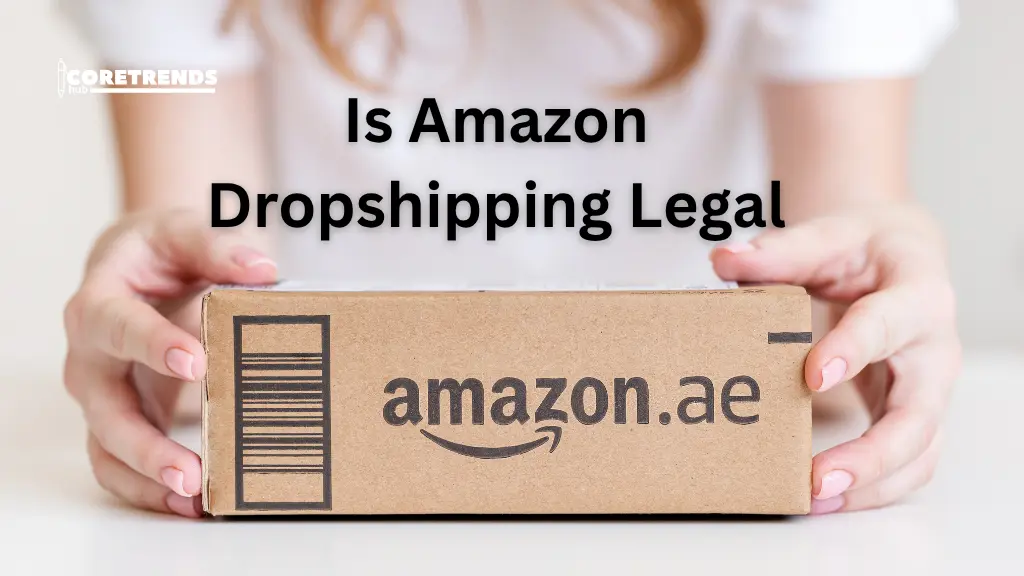Dropshipping is a way of selling products online without keeping them in stock. When a customer buys something from your store, the supplier ships it directly to them. You act as a middleman between the supplier and the customer. This means you don’t need a warehouse or large inventory. You just focus on running the store and promoting products.
Many people choose dropshipping because it is easy to start with low costs. You don’t need to buy products upfront or handle shipping. It allows you to sell a wide range of items without investing a lot of money. You can run your business from anywhere with an internet connection. It is flexible and can be scaled over time.
Table of Contents
Benefits of Starting a Dropshipping Business
Low Startup Costs
Starting a dropshipping business requires very little money. You don’t need to buy products in bulk or rent a warehouse. You only pay for items after a customer places an order. This lowers financial risk and makes it easy for anyone to start without a large investment.
Flexibility to Work Anywhere
You can run your business from anywhere with an internet connection. There’s no need for a physical store or office. This means you can manage your store from home, while traveling, or even part-time.
Wide Product Selection
Dropshipping allows you to sell a variety of products without worrying about storage. You can test new products and niches easily. This helps you find what sells best without committing money to stock.
Easy to Scale
Suppliers handle shipping and storage, so you can focus on growing your business. Adding more products or reaching more customers is simpler because you don’t need extra space or staff.
Low Risk and Simple Setup
Overall, dropshipping is low-risk and simple to start. You can focus on marketing and customer service while suppliers handle the rest. It’s a flexible way to build an online business without heavy upfront costs.
Choosing the Right Niche
Choosing the right niche is very important for a dropshipping business. You need to start by researching market demand. Look at trends on Google, social media, and online marketplaces. This helps you find products that people are actively searching for. A niche with consistent demand increases your chances of making sales.
Next, focus on identifying your target audience. Think about their age, interests, location, and buying habits. Knowing your audience helps you pick products that suit their needs. It also makes your marketing more effective and ensures your store appeals to the right people.
Profitability is another key factor. Not all popular products are profitable. You should calculate costs, shipping, and potential selling price. Choose a niche where you can make a good profit while staying competitive in the market.
Finally, consider competition and your own interest. Highly competitive niches can be difficult to succeed in, while low-competition niches give you a better chance to stand out. Also, picking a niche you are familiar with or passionate about makes it easier to market products and create engaging content for your store.
Finding Reliable Suppliers
Finding reliable suppliers is a crucial step in dropshipping. The right supplier ensures that your products are delivered on time and meet quality standards, which keeps your customers happy. Start by researching suppliers on platforms like AliExpress, Oberlo, or SaleHoo. Look for suppliers with good ratings, positive reviews, and a history of fulfilling orders efficiently.
Next, check the supplier’s communication and responsiveness. A reliable supplier should respond quickly to questions and provide clear information about products, shipping times, and return policies. This reduces potential issues and ensures smooth operations for your store.
It’s also important to test products before fully listing them in your store. Ordering samples allows you to check product quality, packaging, and shipping speed. This helps you avoid problems that could lead to unhappy customers.
Setting Up Your Online Store
Setting up your online store is an essential step in starting a dropshipping business. The first step is choosing the right platform. Popular options like Shopify, WooCommerce, and BigCommerce are easy to use and offer features designed for dropshipping. Pick a platform that suits your budget and technical skills.
Next, focus on designing your store. Make it simple, clean, and user-friendly. Use professional images, clear product descriptions, and easy navigation. A well-designed store builds trust and encourages customers to buy. Include essential features like a search bar, product categories, and a secure checkout system.
Adding products comes next. Upload high-quality images, write clear descriptions, and set accurate prices. Organize products into categories to help customers find what they need quickly. Set up shipping options and policies clearly so customers know what to expect.
Finally, test your store before launching. Check that all links, buttons, and payment systems work properly. A smooth, professional store helps create a positive first impression and increases the chances of making sales.
Adding Products to Your Store
Adding products to your store is a key step in dropshipping. Start by selecting products that fit your niche and appeal to your target audience. Focus on items with good demand and reasonable profit margins.
Next, create detailed product listings. Use high-quality images from multiple angles and write clear, engaging descriptions. Highlight the features, benefits, and any unique selling points. Make sure customers understand why they should buy the product.
Organize your products into categories to make it easy for customers to navigate your store. Include filters like price, popularity, or type to improve the shopping experience.
Set up accurate pricing and shipping information. Include any delivery times, costs, and return policies. Clear information builds trust and reduces customer questions or complaints. Regularly update your products to reflect trends and stock availability to keep your store fresh and reliable.
Setting Competitive Prices
Setting competitive prices is very important in dropshipping because it affects both sales and profits. Start by researching what similar products are selling for in other stores. Check online marketplaces and competitor websites to understand the price range. This helps you avoid pricing too high, which may drive customers away, or too low, which can reduce your profits.
Next, calculate all your costs carefully. Include the product price from the supplier, shipping fees, transaction charges, and marketing expenses like ads. Make sure your selling price covers these costs and still gives you a reasonable profit. Proper calculation ensures your business remains sustainable and avoids losses.
Consider different pricing strategies to attract customers. You can use cost-plus pricing, where you add a fixed profit margin, or competitive pricing, where you match or slightly beat competitors’ prices. You can also offer discounts, bundle deals, or limited-time offers to increase sales and attract more buyers.
Creating a Marketing Strategy
Creating a marketing strategy is essential for driving traffic and sales to your dropshipping store. Start by identifying the best channels to reach your target audience. Social media platforms like Instagram, Facebook, and TikTok are effective for promoting products visually, while email marketing helps keep customers informed and engaged.
Next, consider influencer marketing. Partnering with influencers in your niche can help you reach a larger audience quickly. Choose influencers whose followers match your target customers to get better results. Paid advertising, such as Facebook Ads or Google Ads, can also help bring targeted traffic to your store and boost sales.
Content marketing is another effective approach. Creating blogs, videos, or social posts about your products adds value for customers and improves your store’s visibility in search engines. You can also run promotions, discounts, or seasonal campaigns to attract new buyers and encourage repeat purchases.
Finally, track your marketing efforts. Monitor which channels bring the most traffic and sales, and adjust your strategy accordingly. Continuous analysis and improvement help you spend your marketing budget wisely and grow your dropshipping business effectively.
Managing Orders and Fulfillment
Managing orders and fulfillment is a key part of running a dropshipping business. When a customer places an order, you need to ensure it is processed quickly and accurately. This starts with receiving the order details and forwarding them to your supplier for shipping.
Next, keep track of each order’s status. Make sure the supplier ships the product on time and provides tracking information. Sharing tracking details with customers helps build trust and reduces inquiries about delivery.
It’s also important to handle returns and refunds properly. Have clear policies in place so customers know how to return items or request a refund. Work closely with your supplier to manage defective or lost products efficiently.
Finally, use tools and apps to automate order processing whenever possible. Automation reduces errors, saves time, and allows you to focus on marketing and growing your business while ensuring customers receive their orders smoothly.
Conclusion
Starting a dropshipping company is simple and affordable. You don’t need to keep stock or manage shipping yourself. Focus on choosing the right niche, finding reliable suppliers, and setting up a professional online store. Add quality products, set competitive prices, and create a strong marketing plan to attract customers.
Managing orders, customer service, and fulfillment carefully is important to keep buyers happy. Regularly review your store, track performance, and make improvements. With patience and consistent effort, you can grow your dropshipping business into a successful online store and earn steady income over time.



